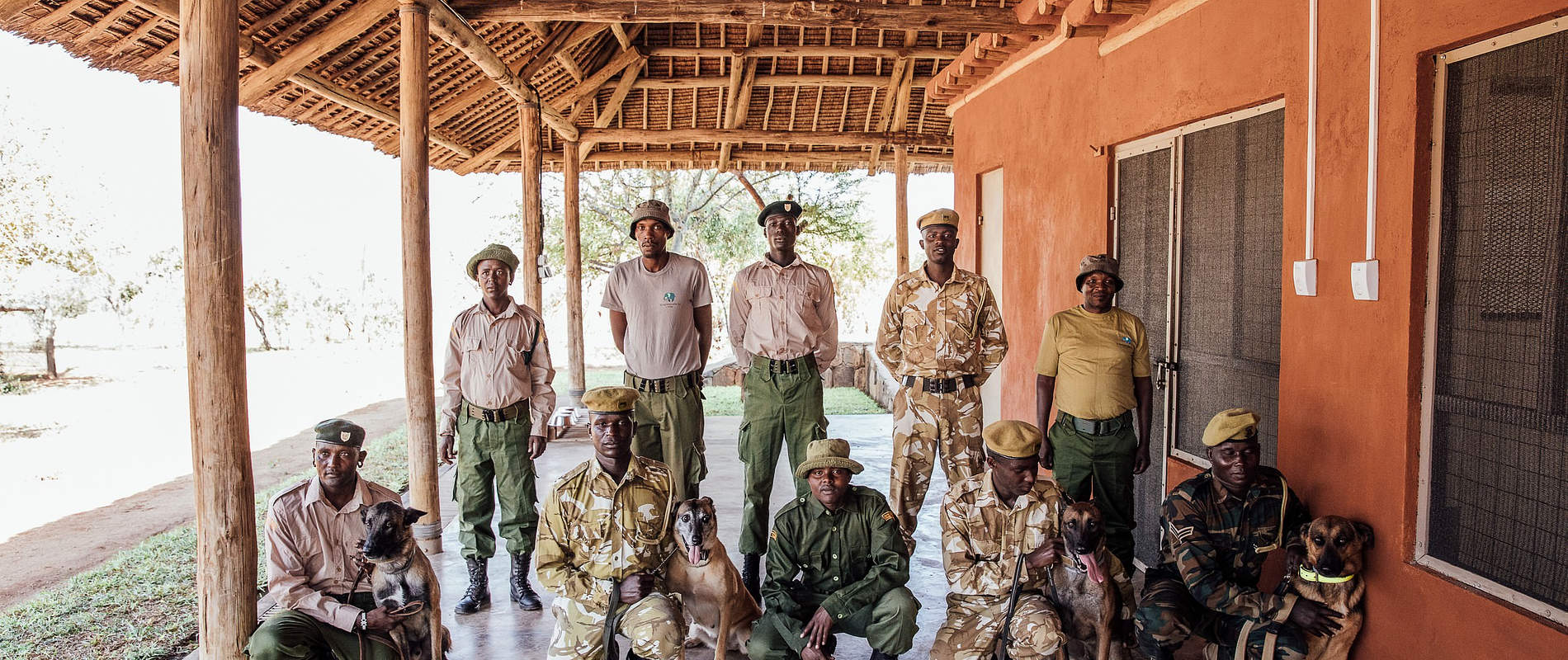Four year old Max bounds through the dense commiphora bush, typical to Tsavo along with Tsavo’s rust red soil
Four year old Max bounds through the dense commiphora bush, typical to Tsavo along with Tsavo’s rust red soil. His playful mood swiftly turns to keen determination as he catches human scent after being ‘cast’ by his handler across a wide area. Straining at the leash and brushing off the thorns of harsh scrubland that scuff against his side, he guides Minor along the invisible scent path only he can detect, up rocky kopjes and through the bush for countless kilometres until he finds his target, another handler hiding beneath a tree out of sight from the DSWT aeroplane that circles above. At the end of a successful track. even in this simulated circumstance, he receives his most coveted reward, his ‘kong’ toy, also used in training back at the compound. His resting temperature is taken, as well as the ambient temperature and humidity level to make sure he is within a safe working temperature range in the hot and arid environment. This simulated training exercise is essential, for both handler and dog, in order to be ready for a real life situation when they encounter illegal activity within the park. It is also vital training to make sure they are capable to keep up with a poacher on the run. Training can be across 25km of terrain to simulate a real life scenario.
In favourable conditions, one dog has the ability to secure a wildlife habitat of up to 32km2 with the search capabilities of up to 60 rangers covering the same ground over the same time. The dogs, like Max, are tracking disturbances in the ground and spoor, as well as the scent of humans and depending on certain conditions, they can follow this trail for around two days; relying on their nose, they can track overnight too.


Max is one of the three Belgian Malinois working in The David Sheldrick Wildlife Trust’s Canine Unit, launched in 2016 with the support of the Kenya Wildlife Service, to create an effective Dog Unit in the Tsavo Conservation Area in support of all anti-poaching operations.


The Canine Unit is run in partnership with KWS, initiated to support the work of our collaborative existing ground teams and it is because of our solid platform for deployment to any scene of wildlife crime that we have achieved such positive results. It has been reported to us that what the perpetrators of illegal activity fear most are “the helicopters and the dogs”; the planes slightly less, as they cannot immediately land! With this understanding, aerial support is only called in when eyes are laid on the culprit, to assist in tracking their movements before the dog and team of rangers can catch up to them on foot and make their arrests. Because of this fear of accuracy, the shear presence of the Canine Unit over the last year and a half has acted as a deterrent towards illegal activity, as word spreads in the surrounding areas how Max, Naiko, Tanja and now Molly can track a person, even to their front door.


With an active Aerial Unit, the DSWT has the support of five fixed-wing aircraft and two helicopters to ensure rapid response, alongside the extensive ground network of DSWT/KWS rangers and an armed Rapid Response KWS unit on call, the teams are poised, prepared and ready to apprehend and arrest wildlife offenders at a moment’s notice.










